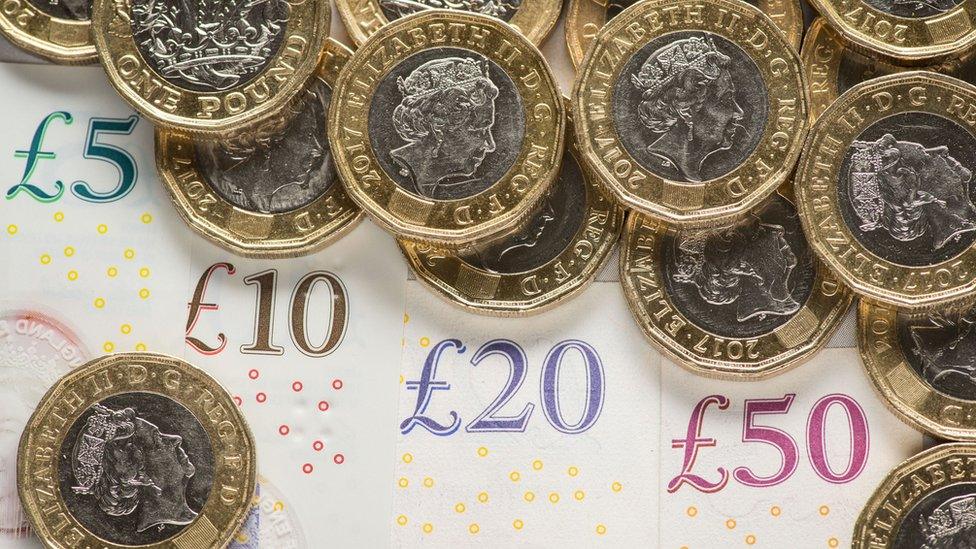Northern Ireland's 11 councils to increase rates
- Published
- comments
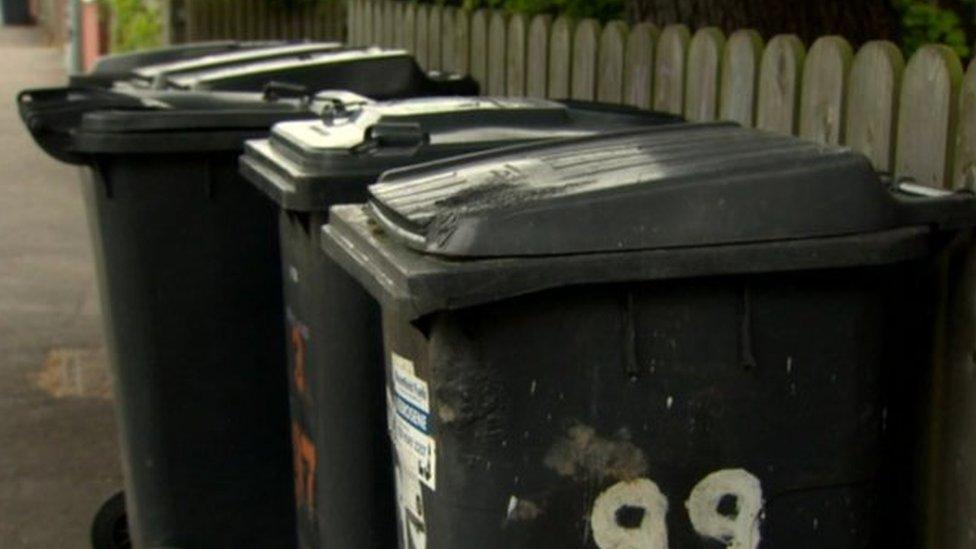
The money generated by rates is used to pay for public services, with bills decided against the value of a property
All of Northern Ireland's 11 councils have agreed rates increases for 2022-23.
The highest percentage increase was by Mid Ulster District Council at 3.9%.
The lowest percentage increase was agreed by the Antrim and Newtownabbey council area, which announced a 1.9% rise.
The money generated by rates is used to pay for public services, with bills decided against the value of a property.
Councils have cited the affect of the coronavirus pandemic as well as rising energy costs as factors behind the decision to increase rates.
Some councils froze their rates for last year as a way of acknowledging the financial pressures facing people during the pandemic.
Rates are set at a regional level each year by Stormont and a rate is then also decided at a district level by each council in Northern Ireland.
They regional rate covers regional services like hospitals and roads maintenance, while the district rate covers services like leisure centre facilities and waste management.
Antrim and Newtownabbey
Rates in the Antrim and Newtownabbey council area will increase by 1.9%.
The SDLP had proposed a rates freeze for the year ahead, but Alliance councillor for Antrim Neil Kelly said that would be "ridiculous and irresponsible".
Council chief executive Jacqui Dixon said it would be "difficult to identify" how to freeze rates "without having an impact on our financial sustainability".
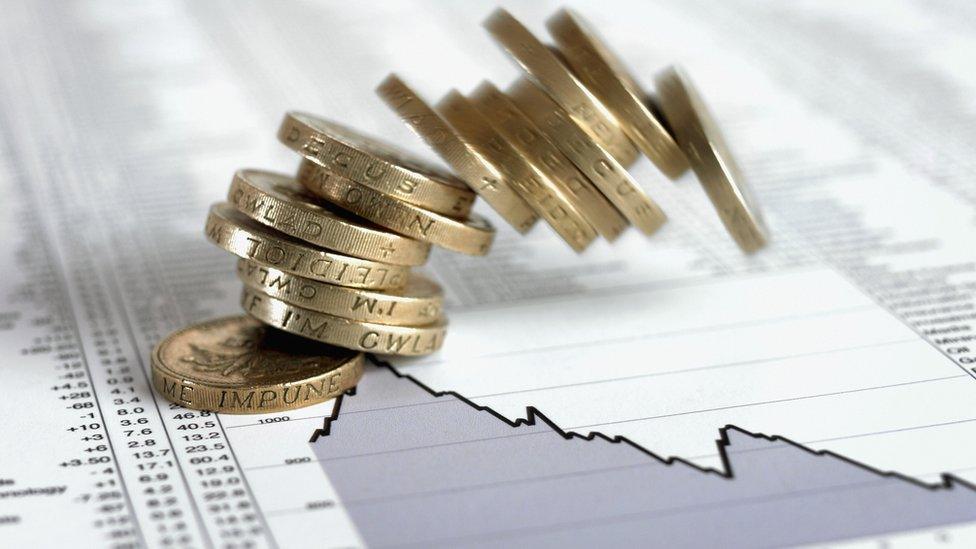
Armagh City, Banbridge and Craigavon
Those in the ABC Borough Council area will see a rise of 1.97% in their rates for the next financial year.
It adds an extra £0.19 per week to bills, or £9.79 annually for the average household.
For businesses, it means an increase of £13 per month or £156 for the year.
Lord mayor of Armagh City, Banbridge and Craigavon, Alderman Glenn Barr, said the rate struck was well below inflation and was "marginal in comparison to the significant increase in energy costs".
"The council has tried to absorb as much of these costs as it can and in the face of other unavoidable pressures such as the new health and care levy," he said.
Ards and North Down
The rate agreed by Ards and North Down councillors represents a 2.75% increase for the borough.
It equates to an increase of £1 per month for the average household (£12 a year), or £10 a month for the average business (£120 a year).
The council has said the money will go towards redevelopment plans for Bangor Waterfront, better borough-wide broadband and an Innovation Hub, among other projects.
Belfast
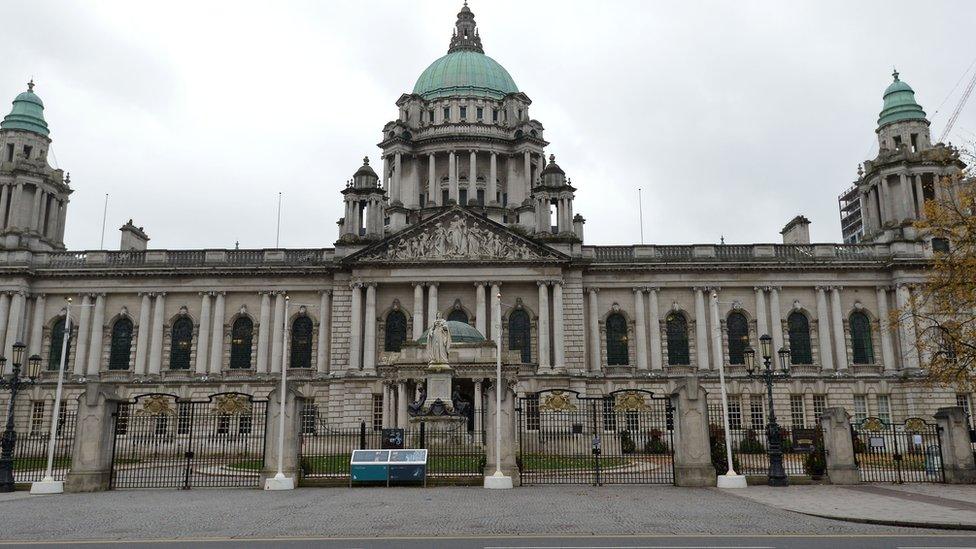
Councillors have agreed a 2.99% increase for the district for 2022-23.
The council said on its website that the rise fell well below the inflation rate.
Broken down, the costs will mean an average increase of:
£1.18 per month, or £14.11 per year, for a house
£19.18 per month, or £230.22 per year, for an office unit
£15.72 per month, or £188.60 per year, for a retail unit
Causeway Coast and Glens
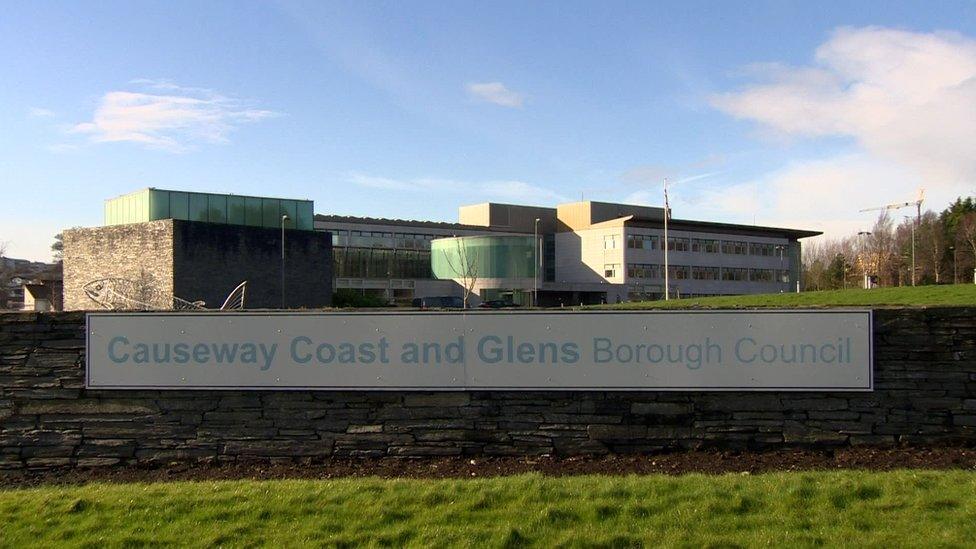
The council agreed a rates rise of 3.49%.
It means monthly bills for households in the district will increase by £1.40 (based on a house value of £121,478).
Mayor of Causeway Coast and Glens Borough Council Richard Holmes acknowledged the rise and cited several pressures.
"Unprecedented rises in utility and energy costs along with other factors including the ongoing health crisis and uncertainty around central government funding, has meant the organisation has been faced with more than £5.1m of additional financial pressures beyond our control," he said.
Derry City and Strabane
The rates for those in the Derry City and Strabane district will rise by 3.44%.
It means the average domestic rate will increase by £0.33 per week, or £16.97 annually.
Mayor of Derry City and Strabane District Council Alderman Graham Warke said the decision had been "a very challenging process in a difficult economic climate".
Fermanagh and Omagh
The rate struck by Fermanagh and Omagh District councillors was 2.72%.
The average household (house price listed at £114,500) will pay an extra £0.23 per week or £11.96 annually.
The council said the setting of the rate would raise approximately £38m in additional revenue, with the majority (£10m) earmarked for waste management.

Northern Ireland has 11 council areas
Lisburn and Castlereagh
Councillors agreed to increase rates in the district by 3.64%.
The council said that for a house with a value of £180,000 this would mean an increase in monthly costs of £1.73, or £20.70 a year.
It cited improvements to full-fibre broadband across the district and investment in community facilities as ways in which the money gathered from rates would be used.
Mid and East Antrim
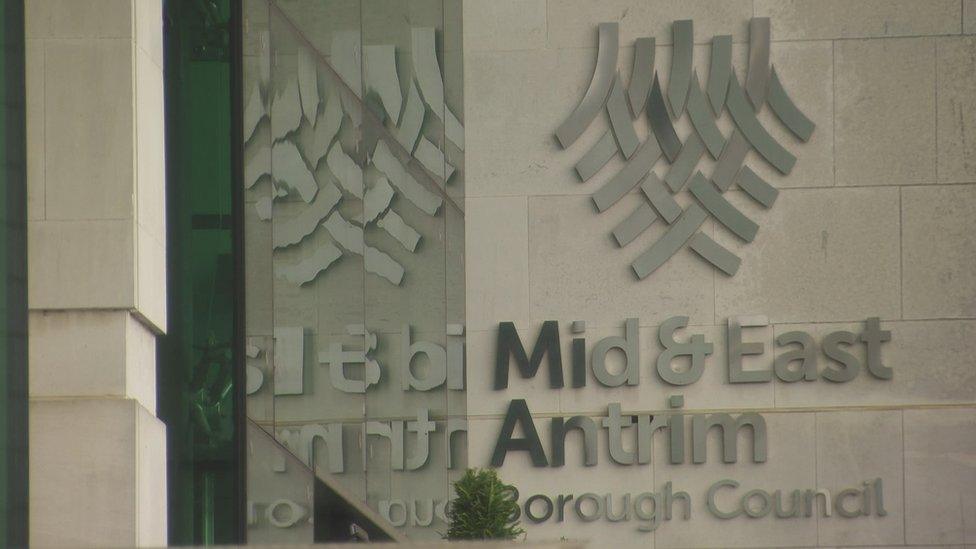
The rate struck for the Mid and East Antrim council area is 3.64%.
It means the average household's bill will increase by £0.34 per week or £17.50 per year.
The average business will see a £4.44 rise per week or £231 annually.
Alderman Billy Ashe cited rising national insurance payments, national pay awards, fuel and energy increases, as well as insurance and landfill costs as factors behind the increase in rates bills for those in the borough.
Mid Ulster
Mid Ulster District Council struck the highest percentage increase for rates in Northern Ireland at 3.9%.
The council said the increase had to be factored against a rates freeze applied for the 2021-22 financial year and that despite the rise, it was confident its rates would be among the lowest in Northern Ireland.
The rates increase equates to a rise of £1.68 per month for the average household, or £16.75 per year.
Factors cited for the rise in rates included £4.1m of additional financial pressures beyond the control of the council, which said it would deliver an £80m capital investment programme in the next three years.
Newry, Mourne and Down
The council agreed a 1.95% increase from last year's rates for the district.
Councillor Cathy Mason said the council was happy the figure would not increase by more than 2%.
"It is crucially important that we strike a balance between supporting our ratepayers through challenging times and continuing to invest in the future of the district," she said.
Related topics
- Lisburn and Castlereagh City Council
- Belfast City Council
- Armagh City, Banbridge and Craigavon Borough Council
- Antrim and Newtownabbey Borough Council
- Mid Ulster District Council
- Causeway Coast and Glens Borough Council
- Derry City and Strabane District Council
- Fermanagh and Omagh District Council
- Mid and East Antrim Borough Council
- Ards and North Down Borough Council
- Local government
- Newry City, Mourne and Down District Council
- Published9 July 2021
